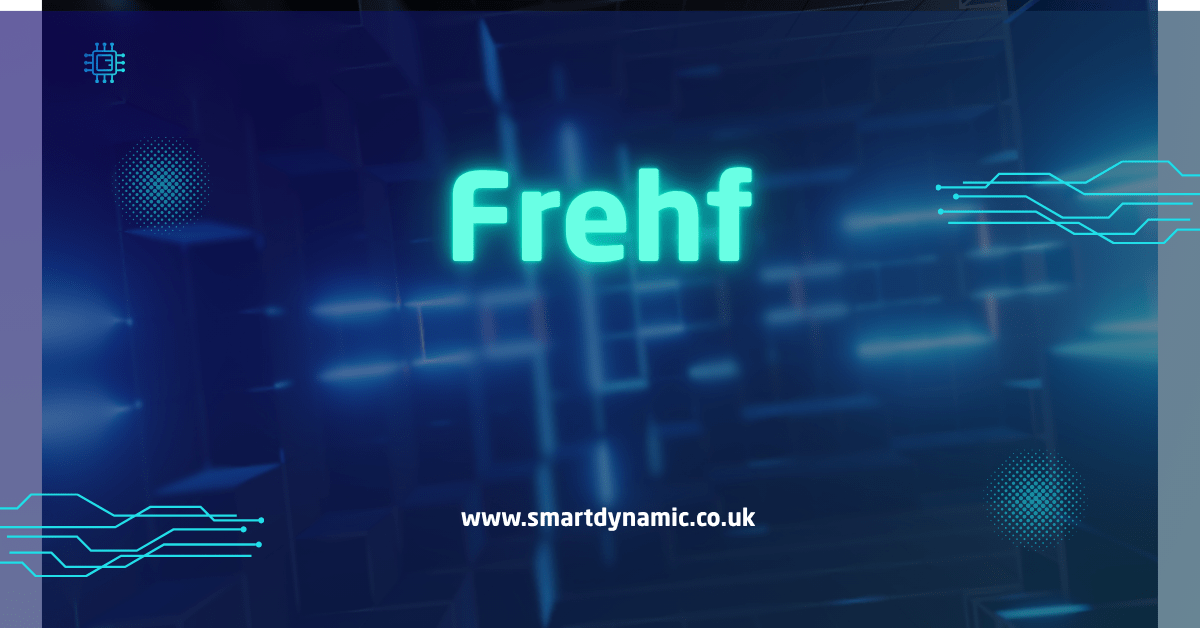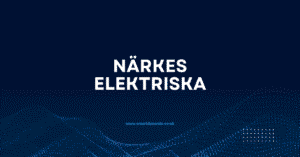Introduction: What is Frehf?
In an era where digital interactions often feel cold and transactional, a new paradigm is emerging: Frehf. Frehf (pronounced “fresh”) is not a specific product but a holistic framework for building adaptive, context-aware, and empathetic artificial intelligence systems. It represents a significant leap beyond traditional, rigid algorithms by integrating principles from affective computing, sensor fusion, and human–computer interaction to create interfaces that understand, learn from, and adapt to human users in real-time. At its core, Frehf aims to bridge the emotional gap between humans and machines, fostering a more intuitive and supportive technological environment.
Executive Summary (90 seconds overview)
Frehf is a comprehensive architectural framework designed to power the next generation of intelligent systems. It moves past simple command-response models to create a fluid, dynamic interaction loop. By processing a multitude of contextual and biometric cues, a Frehf-based system can perceive a user’s state, make intelligent decisions about how to respond, and continuously adapt its behavior. This leads to highly personalized experiences in areas like mental health support, personalized learning, and smart environments. While offering immense business value through enhanced user trust and engagement, its implementation requires a steadfast commitment to ethics, particularly privacy by design. This overview will unpack its origins, technical layers, and the profound impact it promises to deliver.
Origins & Conceptual Definition
The concept of Frehf was born from the convergence of several fields. The limitations of traditional AI—which often operates in a vacuum, devoid of situational or emotional context—became increasingly apparent. Researchers in affective computing at institutions like MIT Media Lab pioneered the idea of machines recognizing human emotion. Simultaneously, advancements in edge AI and sensor fusion made it feasible to process complex, multi-modal data in real-time.
Frehf synthesizes these advancements into a unified philosophy. Conceptually, it is defined as: A framework for creating AI systems that dynamically align their functionality, interface, and content with the user’s real-time cognitive, emotional, and environmental context, thereby promoting efficacy, accessibility, and well-being.
Theoretical Foundation & Design Principles
Frehf is built upon a solid theoretical bedrock, drawing from psychology, computer science, and cybernetics.
-
Theory of Mind for Machines: Frehf-inspired systems are designed to infer user intent and state, similar to a basic “theory of mind.”
-
Cybernetic Feedback Loops: The system is viewed as a continuous feedback loop with the user, constantly adjusting its output based on the user’s input and observed state.
-
User-Centered Adaptive Design: The user’s needs are the ultimate arbiter of the system’s behavior.
These theories translate into key design principles:
-
Context is King: The system must be profoundly context aware, considering location, time, social setting, and user activity.
-
Empathy as a Function: Empathetic AI is not a buzzword but a core capability, enabling appropriate and supportive responses.
-
Proactive Adaptability: The system should anticipate user needs and adjust adaptive interfaces before explicit commands are given.
-
Unobtrusive Presence: Technology should assist, not distract. Frehf systems aim for a calm, minimal-interaction design.
-
Ethical Primacy: All processes must be governed by transparent algorithms and a privacy by design foundation.
Technical Architecture (with layers)
The power of Frehf lies in its layered, yet interconnected, architecture.
| Layer | Core Function | Technologies Involved |
|---|---|---|
| Input Layer | Data Acquisition | Biometric sensors, microphones, cameras, calendars, user logs, environmental IoT sensors. |
| Perception Layer | Data Synthesis & Context Building | Sensor fusion, Natural Language Processing (NLP), Computer Vision, Emotion Recognition. |
| Decision Layer | Strategy Formulation | Reasoning engines, Policy-based models, Reinforcement Learning. |
| Adaptation Layer | Action Execution | Dynamic UI/UX rendering, Content recommendation engines, Notification management. |
| Feedback Layer | Learning & Refinement | Implicit feedback (e.g., user engagement time), Explicit feedback (e.g., thumbs up/down), Continuous learning models. |
The Workflow: The Input Layer gathers raw data. The Perception Layer fuses this data to create a rich “context model” of the user (e.g., “User is at home, after 10 PM, heart rate is elevated, and is quickly scrolling through a news app”). The Decision Layer uses this model to choose an action (e.g., “Reduce notification intensity and suggest a breathing exercise”). The Adaptation Layer executes this by dimming the screen and showing a calmative prompt. The Feedback Layer then monitors if the user engages with the prompt to improve future decisions.
Use Cases & Industry Applications
-
Healthcare & Wellness: A mental health app using Frehf could detect signs of anxiety from voice patterns and device interaction, offering timely mindfulness exercises or connecting the user with a helpline.
-
Personalized Education: An e-learning platform could adapt curriculum difficulty and presentation style in real-time based on a student’s perceived focus and frustration levels.
-
Enterprise Productivity: A smart workspace could adjust lighting, temperature, and schedule interruptions based on an employee’s stress levels and deep work sessions.
-
Retail & Customer Service: An online store could transform its interface to be more streamlined and less stimulating if it detects a user is making a hurried purchase or appears frustrated.
Advantages & Business Value
Implementing a Frehf framework delivers tangible business outcomes:
-
Enhanced User Engagement & Retention: Deeply personalized experiences foster loyalty and long-term usage.
-
Improved Accessibility: Systems automatically adapt to users with different abilities and situational impairments.
-
Stronger Brand Trust: Demonstrating a commitment to user well-being builds immense user trust.
-
Operational Efficiency: In enterprise settings, reducing cognitive load and context-switching can significantly boost productivity.
You can also read our recent articles
Risks, Ethics & Limitations
The capabilities of Frehf come with significant responsibilities.
-
Privacy & Data Security: The intimate data required is a prime target for breaches. A privacy by design approach, where data is anonymized and processed on the edge AI device whenever possible, is non-negotiable. Compliance with regulations like the GDPR is critical.
-
Algorithmic Bias: If training data is biased, the system’s adaptations could perpetuate stereotypes. Continuous auditing is essential.
-
User Manipulation: The line between helpful suggestion and manipulative nudging is thin. Transparency about how and why the system adapts is key to personalization ethics.
-
Technical Limitations: Emotion recognition is an imperfect science, and sensor data can be noisy, leading to incorrect adaptations.
Frehf vs Other Frameworks
| Feature | Frehf Framework | Traditional Rule-Based Systems | Standard Machine Learning |
|---|---|---|---|
| Core Focus | Dynamic, context-aware adaptation | Static, pre-defined logic | Pattern recognition from data |
| Adaptability | High (Real-time, continuous) | None | Low (Retrained periodically) |
| Input Complexity | Multi-modal (sensor, context, user) | Single-dimensional (explicit input) | Multi-dimensional (but often static) |
| User Interaction | Fluid, empathetic, proactive | Rigid, reactive | Predictive, but not adaptive |
Narrative Explanation: While traditional systems follow “if X, then Y” rules, and standard ML models find patterns in historical data, Frehf is inherently dynamic. It doesn’t just predict; it responds to a live, evolving situation. It’s the difference between a website that recommends a product (ML) and one that completely changes its layout and tone to be calming because it senses you’re stressed (Frehf).
Implementation Roadmap & Best Practices
-
Phase 1: Foundation & Ethics (Months 1-3): Define clear ethical guidelines and data governance policies. Start with a single, high-value use case.
-
Phase 2: Data & Perception (Months 4-9): Implement robust sensor fusion pipelines. Focus on building an accurate context model with minimal, privacy-sensitive data.
-
Phase 3: Decision & Adaptation (Months 10-15): Develop and test adaptation policies. Ensure users have clear controls to override or turn off adaptations.
-
Phase 4: Feedback & Scaling (Months 16+): Integrate the feedback loop for continuous learning. Expand to other use cases within the organization.
Best Practice: Always provide a “Why did you do that?” button, explaining the system’s reasoning to maintain transparency and trust.
Case Studies / Hypothetical Examples
-
Case Study: “CalmDrive” Navigation App: A Frehf-powered navigation app uses in-car sensors and the driver’s voice to detect drowsiness or road rage. Instead of just rerouting, it might adapt by simplifying the on-screen instructions, playing energizing or calming music, and suggesting a break at the next safe opportunity. This proactive adaptation significantly enhances driver safety.
-
Hypothetical Example: “AdaptiLearn” for Remote Education: A student struggling with a math problem shows signs of frustration (frowning, rapid cursor movements). The Frehf-enabled platform detects this, automatically switches from a text-based explanation to an interactive, gamified module, and reduces the complexity of the problem to rebuild confidence.
Future Trends & Research Directions
The future of Frehf is intertwined with broader AI advancements. Key areas of research, as noted in publications like Nature and the ACM Digital Library, include:
-
Explainable AI (XAI): Making the complex decision-making processes of Frehf systems interpretable to users.
-
Cross-Domain Context Modeling: Allowing a Frehf system in your car to safely and privately inform the Frehf system in your home about your ETA and mood.
-
Advanced Neuromorphic Computing: Hardware that can process sensor data and make Frehf-like adaptations with extreme energy efficiency.
FAQs (Frequently Asked Questions)
1. What does the name “Frehf” stand for?
It’s a conceptual name evoking “fresh” interactions, not a direct acronym. It signifies a break from stale, static AI models.
2. Is Frehf a specific AI I can buy?
No, it’s a framework or a design philosophy that companies can use to build their own adaptive products and services.
3. How does Frehf protect my privacy?
Ethical Frehf implementations use privacy by design. This means data is often processed locally on your device (edge AI), anonymized, and never stored without your explicit consent.
4. Couldn’t this technology be used for manipulation?
Yes, that’s a primary ethical concern. This is why transparency, user control, and clear ethical guidelines are foundational pillars of the Frehf framework.
5. What’s the difference between Frehf and a simple algorithm?
Simple algorithms react; Frehf understands, anticipates, and adapts holistically to your current situation and state.
6. What industries will benefit most from Frehf?
Healthcare, education, automotive, and customer service are poised to see the most immediate and transformative impacts.
7. Do I need special hardware for Frehf?
While advanced sensors (e.g., cameras, microphones, heart rate monitors) enhance its capabilities, many context aware adaptations can be made using existing device data.
8. How does Frehf handle algorithmic bias?
Responsible development involves using diverse training datasets, continuous bias auditing, and allowing user feedback to correct erroneous adaptations.
Conclusion & Vision
Frehf represents a pivotal shift in our relationship with technology. It moves us from a world of tools we command to one of partners that understand. The vision is not of omnipotent AI, but of quiet, supportive, and intelligent systems that enhance human capabilities and well-being without demanding constant attention. Realizing this positive vision hinges on our collective commitment to building these systems with unwavering ethical principles, robust security, and a deep respect for the user. The future of human–computer interaction is not just smart; it’s empathetic, adaptive, and, truly, frehf.








2 thoughts on “Frehf: Redefining Human-Computer Interaction with Empathetic AI”